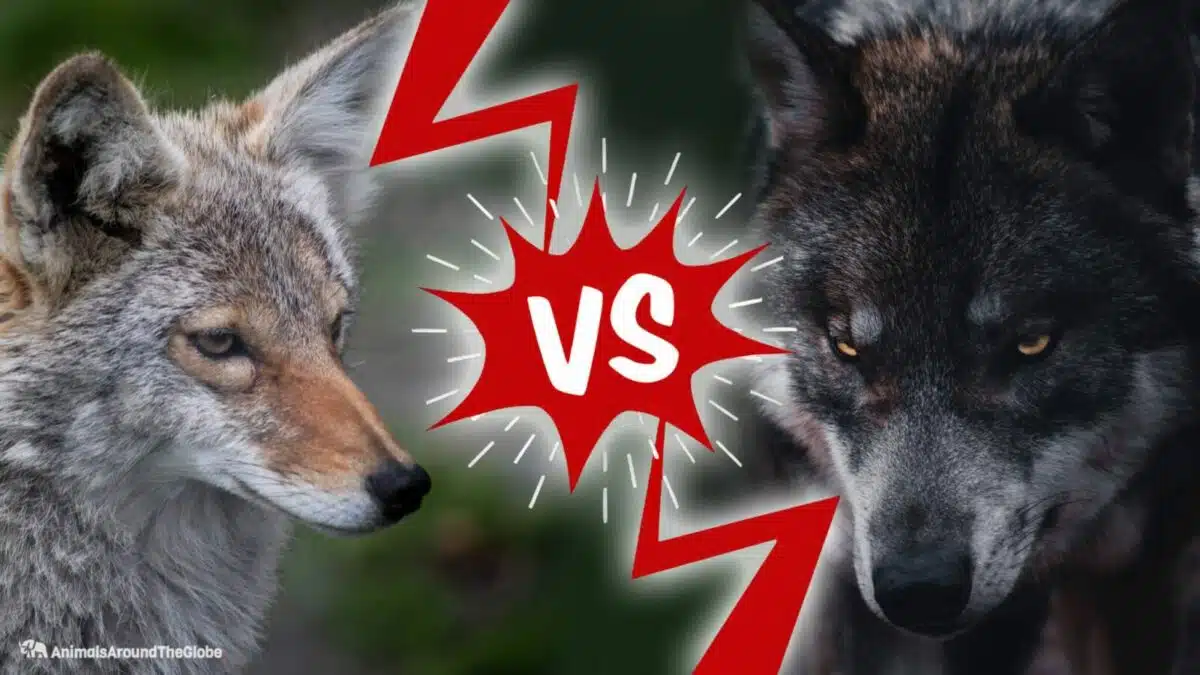Today we’ll be carefully comparing two closely related canines: the coyote vs. wolf! They share many characteristics, both physical and behavioral, but let’s tease out on what points they differ.

Wolves are large canines native to Eurasia and North America. Famously known as gray wolves, they belong to the family “Canis lupus.” Wolves typically live in packs as big as 20, but packs of 6 to 10 are the most common. Packs are a family unit and consist of an adult breeding pair, the alpha male and female, and their offspring of various ages.
Each member of the pack has a distinctive personality. The wolf pack exists because wolves can establish close social bonds with one another. This animal species can be classified as apex predators because hunting in packs can take down big animals such as elk, moose, bison, and deer.
Within the pack, a dominant hierarchy is present, helping preserve order. Alpha males and females continuously assert themselves over their subordinates and decide the group’s activities. The male dominates foraging, food provisioning, and travel-related roles, while the female dominates the care and defense of pups. Both sexes are active in attacking and killing prey but usually hunt alone during the summer.
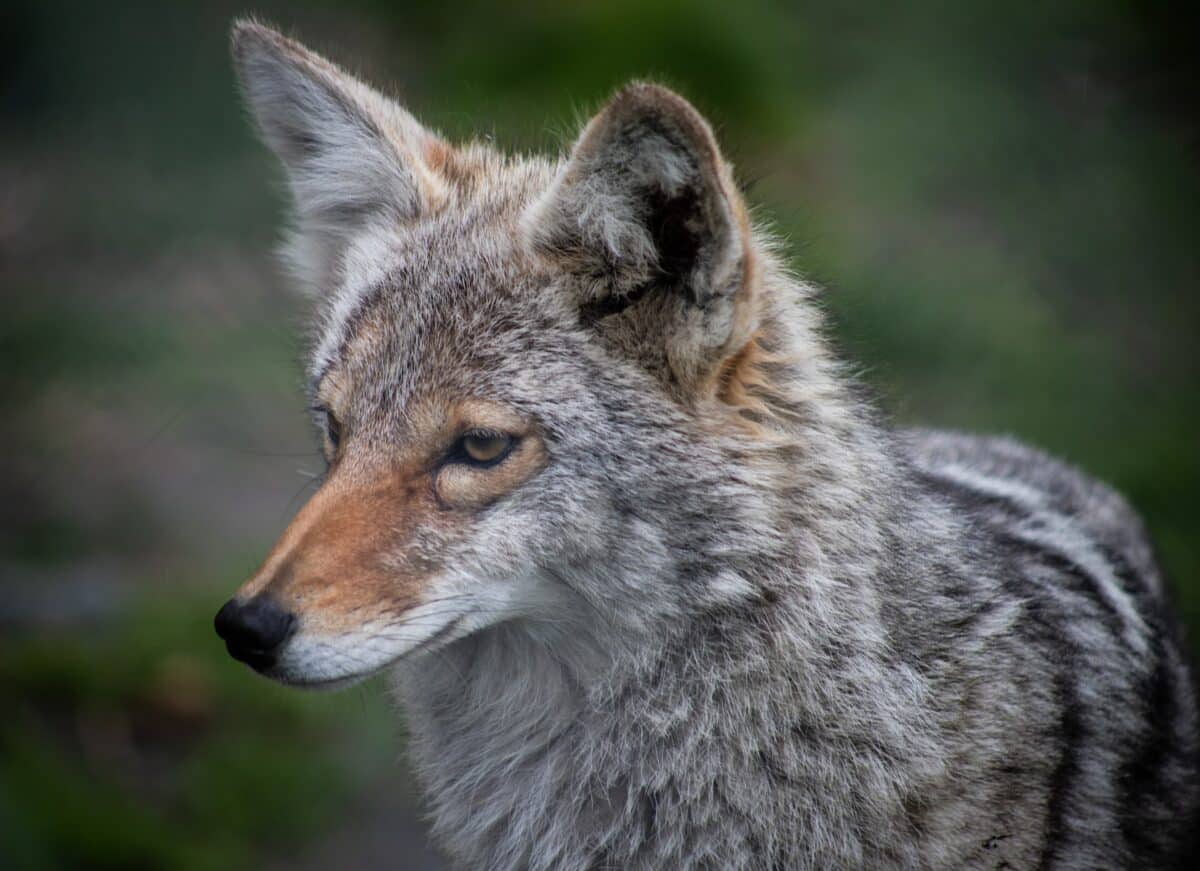
The coyote is a canine mainly found in North America. It is smaller than the wolf, a close relative, and slightly smaller than the red and eastern wolves. Coyotes, sometimes called prairie wolves or brush wolves, have a distinct call they use to communicate. At night, it frequently turns into a raucous canine chorus.
Coyotes also form family groups. Females build dens in spring and give birth to litters of three to twelve pups. Both parents provide food and protect their offspring as well as their home. By fall, the pups are old enough to go hunting independently. Coyotes are formidable hunters; they benefit from their keen vision and sense of smell in the field. They can move up to 40 mph and group and form packs in the fall and winter to hunt more effectively.
Now let’s look closely at the characteristics of the two animals:
Coyote vs. Wolf: A Quick Comparison
| Gray Wolf | Coyote | |
| Face | Broader, larger nose pad | Narrower, smaller nose pad |
| Silhouette | 26 to 32 inches shoulder height, 4.5 to 6.5-foot length | 21 to 24 inches shoulder height, 3.5 to 4.5-foot length |
| Weight | 14 to 65 kg | 9 to 23 kg |
| Calls | Long, low howls | Short, high-pitched howlswith yips |
| Tracks | Min. 4 by 3.75 inches | Max. 2.75 by 2.5 inches |
| Location | North America, Asia, and Europe | North America |
Coyote vs. Wolf: Appearance
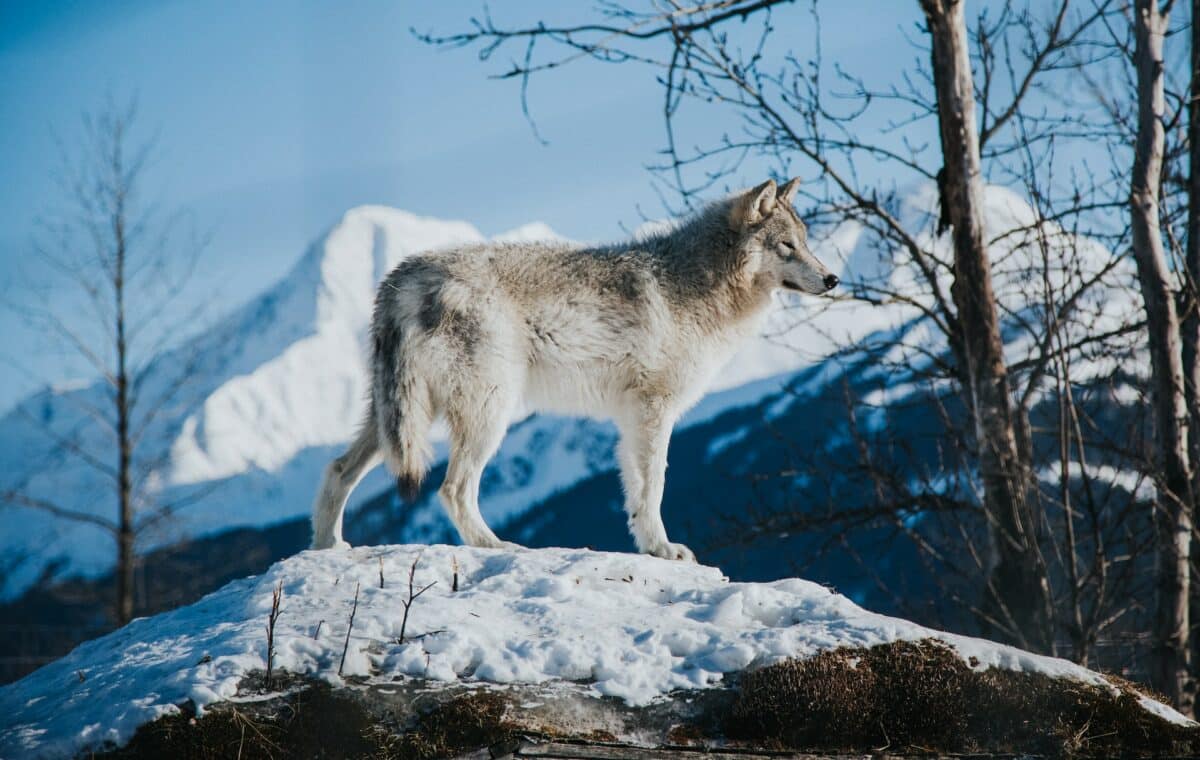
If you put a wolf and a coyote side by side, the wolf will have a wider face, and the coyote will have a more slender look. The wolf has a larger dark nose pad. The coyote’s ears are larger and pointed, while the wolf’s ears are shorter and rounder in appearance.
When it comes to size, coyotes are smaller than wolves. The coyote is around 3,3-4.3 feet long, with a shoulder height of about 2 feet, a weight range of 20–50 lbs, and a tail length of 1–1,3 feet. Long and gritty, the hair is typically grizzled buff above and whitish below. The legs are reddish, and the tail is bushy and has a black tip. The biggest coyotes live in the northeastern United States and eastern Canada. However, there are a lot of regional variations in size and color.
In the case of wolves, a average adult male wolf can stretch to about 6.6 feet in length, which includes their impressive half-meter-long tail. They stand at approximately 30 inches tall at the shoulder and usually weigh around 100 pounds, although their weight can fluctuate depending on their habitat, ranging from 31 to 143 pounds. In general, female wolves tend to be about 20% smaller than their male counterparts.
These magnificent creatures are found at their largest in regions like Alaska, northern Asia, and west-central Canada, while the smallest wolves can be spotted in the southernmost parts of their habitat, including the Middle East, Arabia, and India. Their fur typically boasts a yellow-white hue on their underparts and legs, with the upper body showcasing a range of colors, including gray, brown, reddish, black, or even whitish. In Arctic regions, it’s common to find wolves with lighter-colored fur.
Coyote vs. Wolf: Lifespan
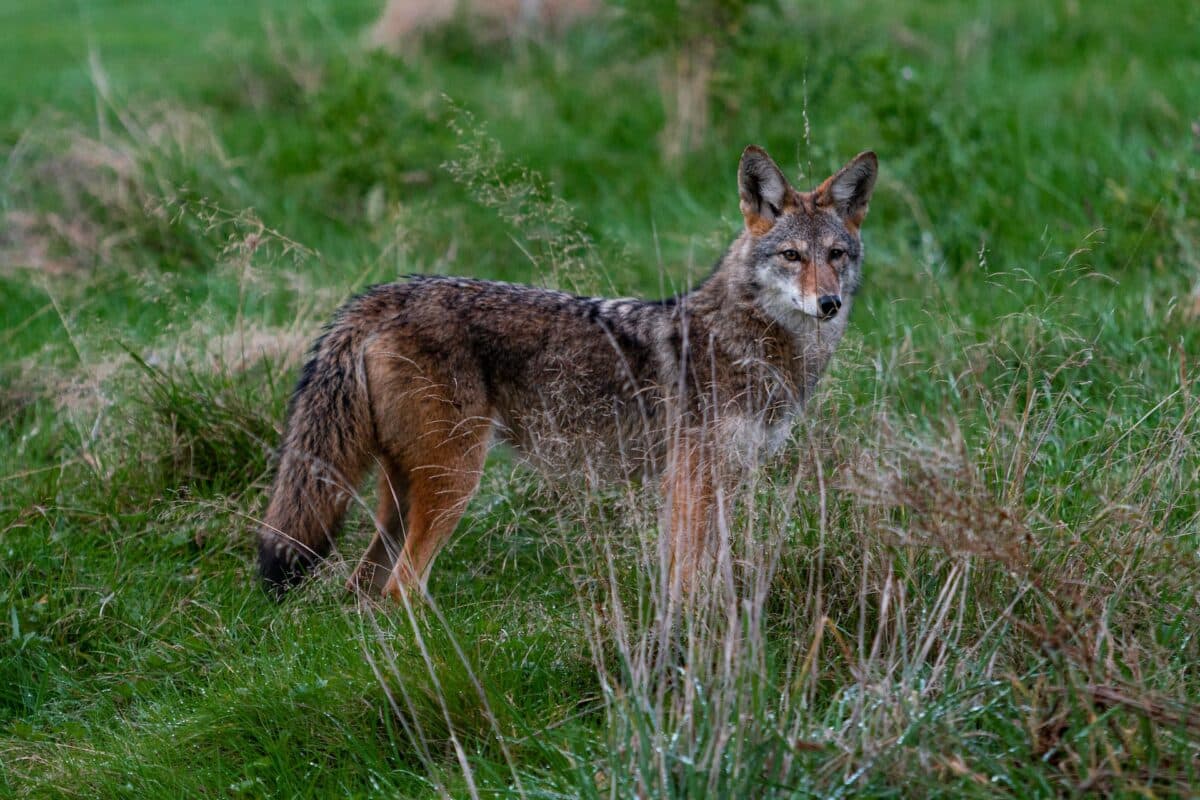
The lifespan of wolves varies greatly depending on whether they are in the wild or captivity. In the wild, the average lifespan is between six and eight years, many die earlier, but some live to the age of 13-14. In captivity, wolves can live up to 18 years. The oldest wolf known was a 19-year-old female named Maddah.
Like wolves, the life spans of Coyotes also vary depending upon whether they are in the wild or captivity. In captivity, Coyotes can survive 13 to 15 years and maybe even 18 years if provided with proper medication and diet. However, in the wild, they have an average life span of 6-8 years. However, many of them die before they turn three.
Coyote vs. Wolf: Diet
The coyote is an omnivorous species. Its primary food sources are small mammals like mice, rabbits, and squirrels, and occasionally larger species like deer. Birds, snakes, insects, and sometimes even fruits and vegetables comprise the remainder of their diet. By maintaining control over these vast animal populations, these creatures play a significant ecological role. But if coyotes hunt endangered species, this could be a problem for the diversity of the local wildlife.
Coyotes prefer to hunt live prey, sometimes using the pack’s cooperation and other times creeping up on their target alone. Still, they won’t hesitate to feast on dead carrion if it’s available.
Wolves, on the other hand, are carnivores. In one sitting, the typical gray wolf may consume up to 20 pounds of meat, but to maintain their average weight, they need to consume roughly 4 pounds daily; because of this and the fact that wolves hunt in packs, gray wolves tend to concentrate on species of larger prey.
To satisfy their hearty appetites, gray wolves are skilled at hunting in packs, primarily targeting large, hoofed animals known as ungulates. Commonly, they seek out prey like moose, white-tail deer, and elk as their main source of sustenance. Wolves’ survival hinges on the habits and availability of these prey animals, as they are opportunistic hunters with substantial appetites.
On average, a single wolf can consume anywhere from 15 to 20 ungulates over the course of a year, and this number can rise when larger packs are involved. While wolves do occasionally dine on smaller creatures like hares, raccoons, mice, and beavers, their reliance on larger prey is essential. As a result, they often embark on extensive journeys, following the migratory routes of their prey to secure their meals.
Coyote vs. Wolf: Habitat
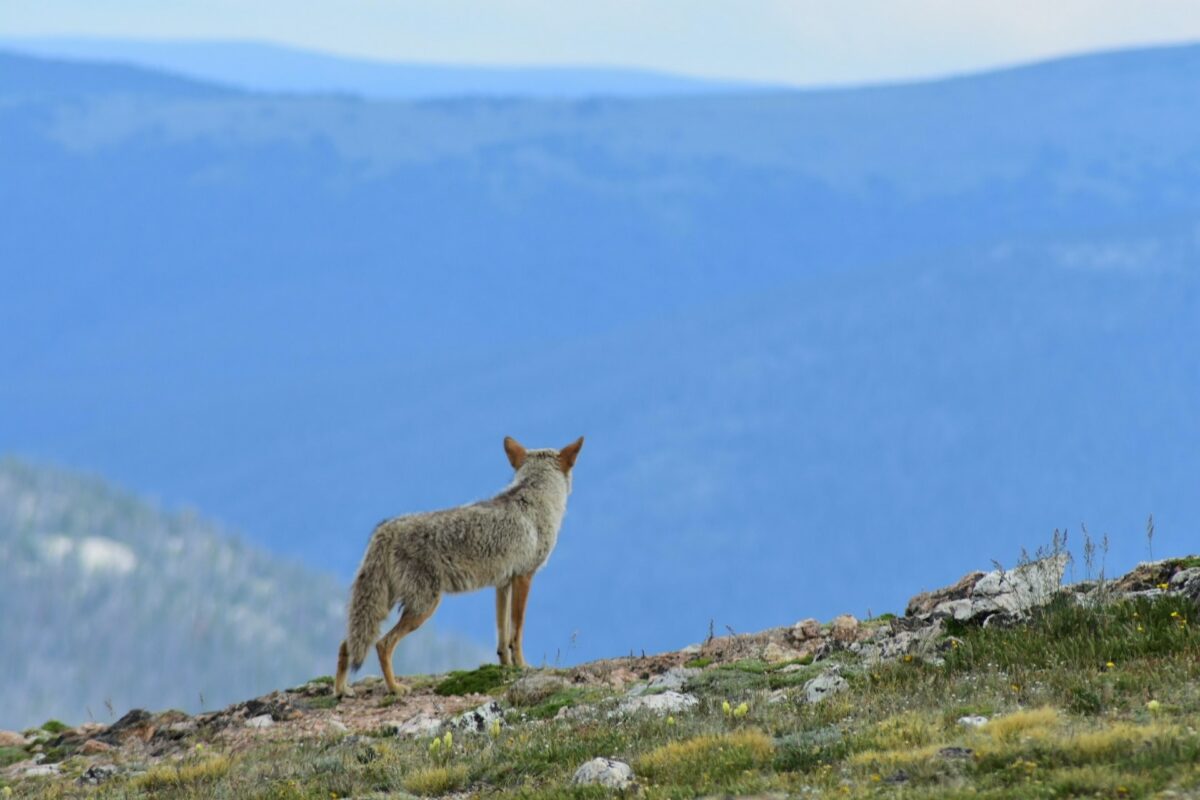
The coyote has a wide range spanning most of North America, from Panama in the south to Canada and Alaska in the north. Still, it is most common in the Great Plains. This versatile animal has adapted to survive on plains, deserts, marshes, woods, mountains, and even tropical rainforests.
Coyotes have adapted to coexist with people in urban and suburban areas as they become more widespread. The range occasionally overlaps with wolf territory, but as wolf numbers have declined, these animals have benefitted by claiming these territories for themselves.
Gray wolves inhabit a diverse range of habitats. They have populations in Alaska, northern Michigan, northern Wisconsin, western Montana, northern Idaho, northeast Oregon, and the Yellowstone region of Wyoming. In eastern Arizona and southwest New Mexico, protected parkland was used to restore Mexican wolves, a subspecies of the gray wolf. Wolves can survive in various settings, including deserts, tundra, woods, and forests.
Coyote vs. Wolf: Behavior
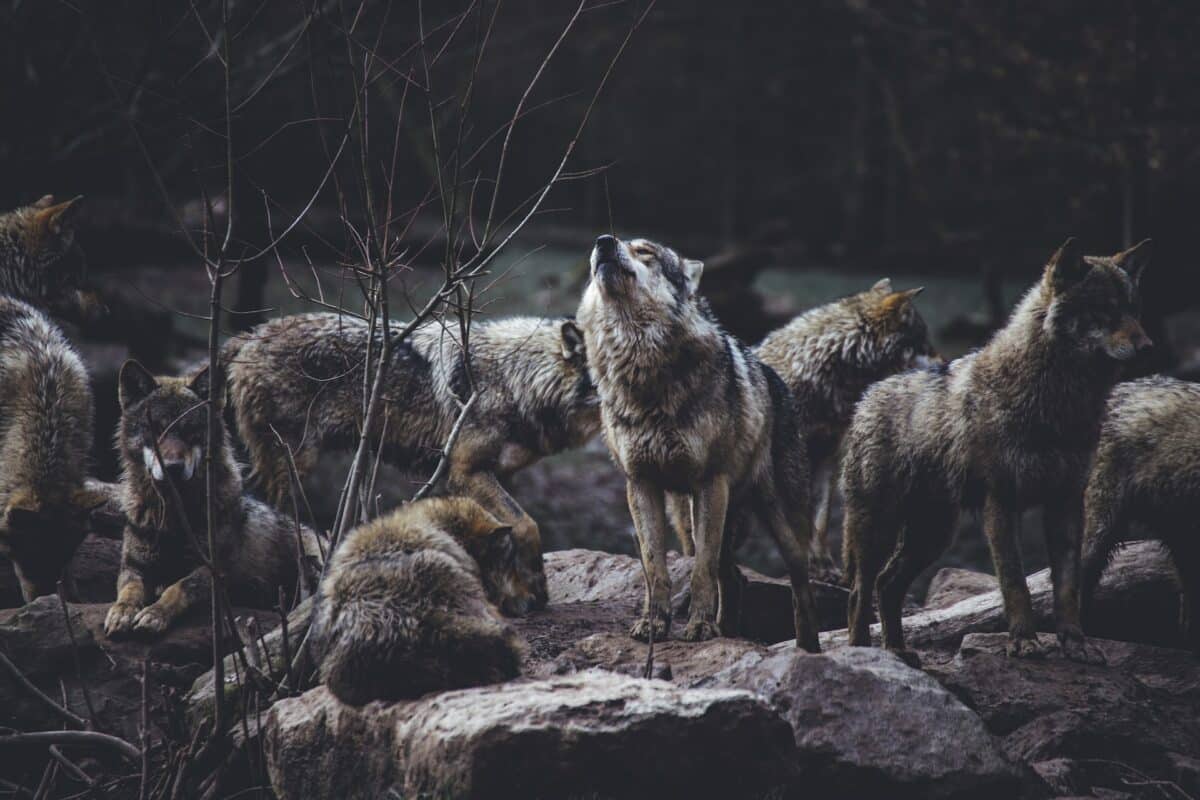
To communicate, wolves use their body language, scent marking, barking, growling, and howling. Their communication frequently focuses on preserving the pack’s social structure. A wolf may roll over on its back, whine, tuck in its tail, lick the mouth of another wolf, or stoop to demonstrate its submissiveness.
A wolf will snarl or push its ears back to challenge another wolf. Barking serves as a warning, and howling is a means of long-distance communication to reunite a pack and keep outsiders at bay.
Long, low-pitched, drawn-out howls are among the eerie sounds for which wolves are famous. Wolves can also bark and growl. Contrary to popular belief, wolves don’t howl at the moon. They are most active at night and can communicate with one another over great distances by howling. Their howls can guard a kill site, protect their young, or keep a pack together if danger is perceived.
However, coyotes’ howls are higher pitched compared to their larger cousins. A coyote pack’s howling vocalizations are frequently confused with barks, yaps, yips, and yodels.
The most vocal of the wild canines, coyotes, employ a complicated mash-up of barks, yips, and howls to communicate regularly. Much more research is necessary to ascertain the actual significance of these sounds.
Coyotes communicate in various ways, including howling, barking, vocalizations, and body language. To mark their territory and let other coyotes know they are there, they also urinate on trees, shrubs, rocks, poles, and other buildings and leave their scat behind.
Coyote vs. Wolf: Reproduction

The coyote’s breeding season typically lasts only a few months, from January to March each year. Though not always for life, men and females may team up for several years. They have a limited time to have children because the female is only in heat for a few days out of the year.
The female will give birth to six to eight pups on average inside the den after bearing them for about two months. The largest documented number of pups in a litter is 19. Both parents are involved in feeding and caring for the offspring. The mother is primarily in charge of nursing responsibilities because the young are born small, blind, and almost entirely helpless.
The puppies are fed food their parents have regurgitated after weaning, which takes a little over a month. In the first six to nine months of life, the young coyotes will become completely independent from their parents.
Males frequently leave the group to seek their fortune, but females stick around for a lot longer and occasionally help care for other babies. Within the first year, these animals are fully grown and sexually mature.
In the case of wolves, there is a dominant male and a dominant female in every pack. These two are the only ones who will breed if the pack is tiny. However, some of the other females may decide to carry young in larger packs. These animals typically give birth to litters of 4-6 after a gestation period of about three months. Early spring is the start of the breeding season, which enables puppies to be born during the warmest season of the year.
Puppies are born with short noses and closed eyes. Many puppies weigh less than two pounds when they are born. The pups grow swiftly, gaining as much as 3 pounds each week in the summer. Within two weeks of birth, puppies normally have their eyes open and can walk.
Coyote vs. Wolf: Population

There are currently about 300,000 wolves living throughout the world. About 16,000 of these creatures in America are in Alaska, and only about 5,000 wolves reside in the neighboring states. Over 60,000 of them currently live in Canada.
The northern regions of Europe and Asia are home to the rest of the world’s population. Most animal conservationists are relieved to announce that populations have remained stable for the past ten years following a vast and upsetting decline in numbers at the end of the 20th century. Wolves, particularly gray wolves, are not at serious risk. Some animals, like the red wolf, are still seriously endangered, though.
According to the IUCN Red List (which assesses the conservation status of many known animals), the coyote is a species of little concern. Despite the number of coyotes killed yearly, their population is growing across most natural areas due to the extraordinary degree to which these animals have adjusted to civilization.
Coyote populations may have increased due to the area’s declining wolf, bear, and cougar populations. The precise population figures, however, still need to be estimated entirely.
Coyote vs. Wolf: Hunting
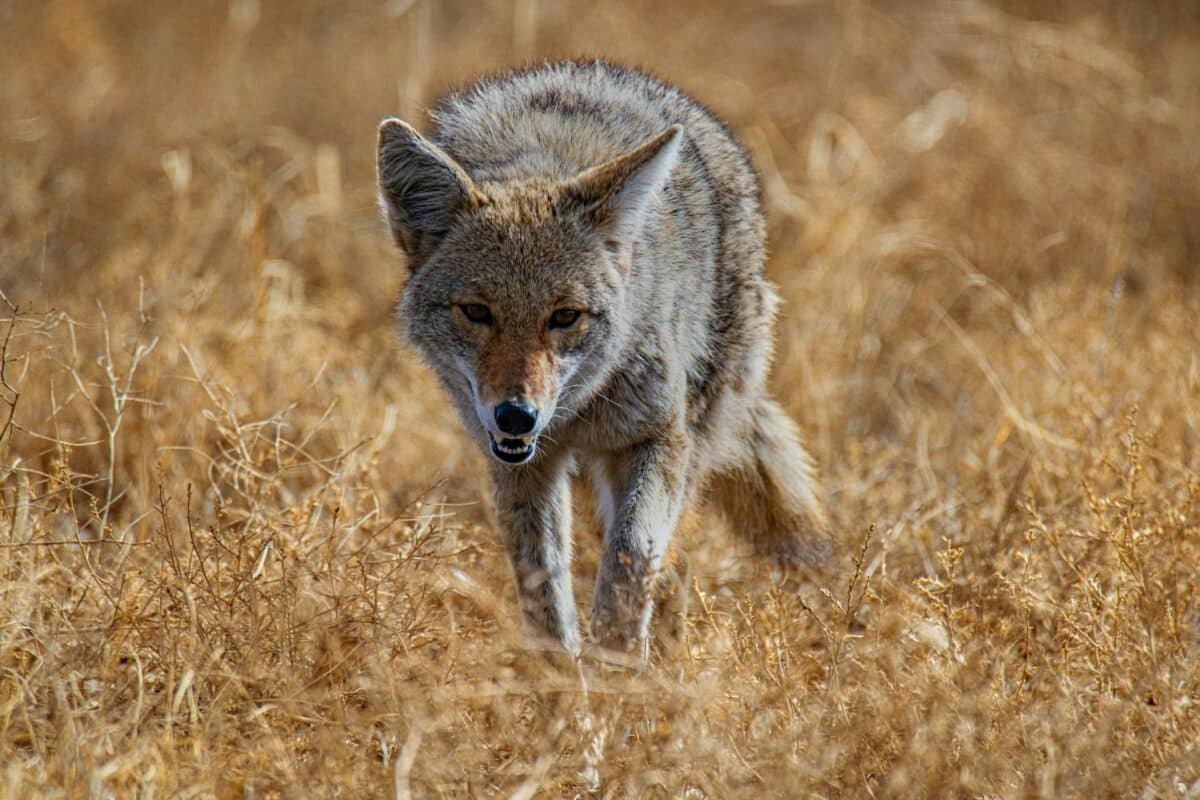
While hunting, wolves use their excellent hearing and extraordinary sense of smell to locate their prey. Wolves pursue and test their prey to find the ones they can kill with the least amount of effort and risk of harm. The wolf pack breaks up and surrounds its victim when hunting larger prey.
Usually, shoulders and flanks are where wolves bite; some wolves grab the animal by the nose while some pack members approach the prey from behind. A wolf may experience risk when hunting. An attacking wolf may be hurt or killed by the antlers and hooves of large animals, such as a moose or caribou. While hunting, wolves have a low success rate.
Wolves can consume up to 20 pounds at one feeding because they have adapted to a feast-or-famine diet. The leftovers from wolves’ kills will feed foxes, coyotes, and ravens if they do not consume them entirely.
To locate suitable prey, wolves must travel great distances. Wolves need an area of at least ten square miles to survive, according to scientists. Wolves in the Arctic frequently travel thousands of miles behind their primary prey, the caribou. Both predators and prey have a role in nature. Although their relative numbers fluctuate, predator and prey can maintain the equilibrium necessary for survival if allowed to do so naturally.
In the wild, coyotes are crepuscular hunters who prefer to hunt in the dawn and dusk hours. However, if their dusk expeditions are unsuccessful, they may still make kills at night. Wild coyotes hunt during the day if they require more food, even though they are primarily nocturnal and crepuscular animals.
Urban coyotes are sometimes called “The Ghosts of the City.” Coyotes in urban areas must avoid being seen by their human neighbors to survive. These coyotes are nearly completely nocturnal, though they can hunt in the early morning. Lone coyotes and coyote pairs will mostly scavenge for food or hunt for small prey.
Coyotes that hunt alone fiercely guard their kills and won’t share their food with any other coyotes, not even pack members. Coyotes have a history of hunting in packs, especially when hunting large prey like white-tailed deer. All the animals that assisted in killing the prey share the kills made by a pack of coyotes.
Most people believe coyotes hunt in packs because they are related to wolves and dogs. Coyotes form informal familial packs but lack the same cohesiveness as wolves, wild dogs, and other canid species. Unlike these animals that hunt in packs, many coyotes prefer to hunt alone. Coyotes are mated or related to one another and may form a loose hunting alliance.
Wrapping Up: Coyote vs. Wolf
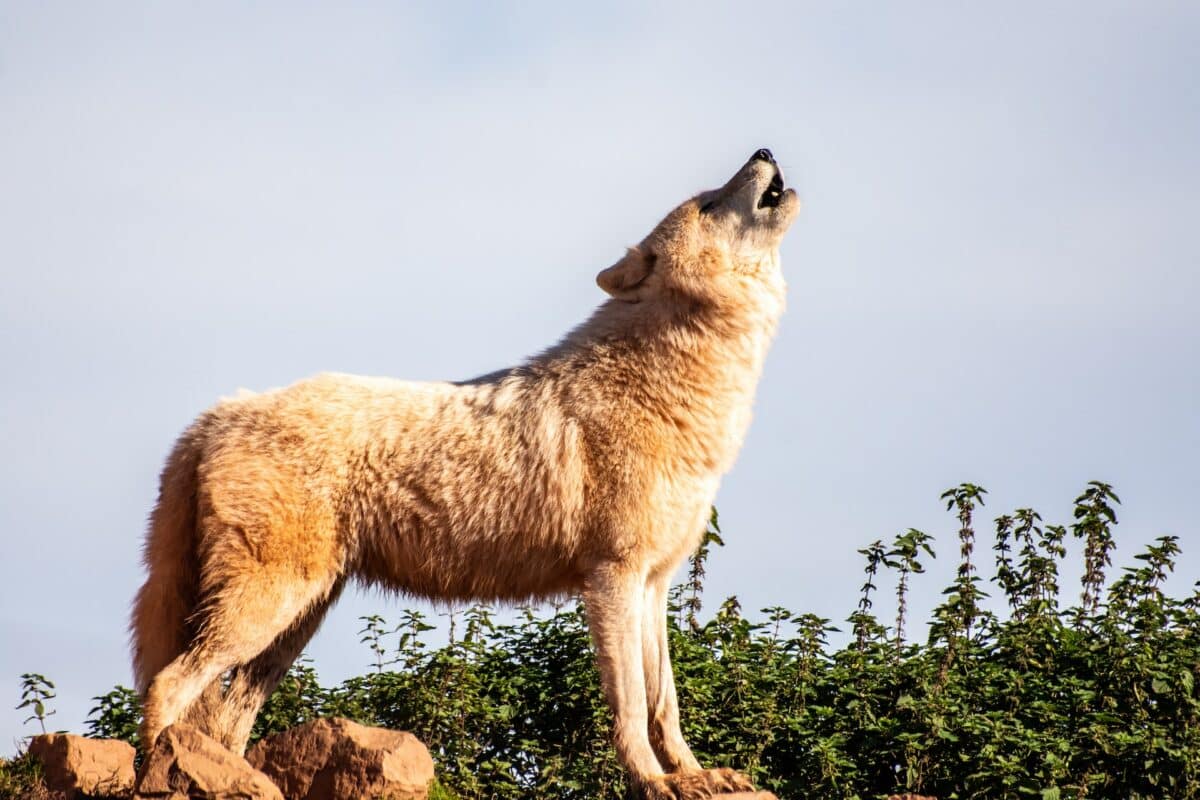
| Key Points |
| Coyote is a canine mainly found in North America, wolves are large canines native to Eurasia and North America. Coyotes are smaller than wolves. |
| In the wild, the average lifespan of wolves is between six and eight years, many die earlier, and some live to the age of 13-14. In captivity, wolves can live for up to 18 years. In captivity, Coyotes can survive 13 to 15 years and maybe even 18 years if provided proper medication and diet, although, in the wild, they have an average life span of 6-8 years. |
| The coyote has a wide range spanning most of North America, from Panama in the south to Canada and Alaska in the north, but it is most common in the Great Plains. Gray wolves inhabit a diverse range of habitats. |
| Wolves regularly hunt in packs, but coyotes form informal familial packs but lack the same cohesiveness as wolves. |
| In a head-to-head battle, the wolf is superior to the coyote in almost every way: size, speed, and bite force. In the wild, wolves have been seen going after coyotes. |
In the case of a head-to-head fight, the wolf would be the clear winner over the coyote because wolves are much bigger in size, weight, and height and have a much larger bite force.
A single coyote is not a threat to a healthy adult wolf. When they have the advantage of numbers, coyotes may stand a chance against wolves.
Coyotes and wolves belong to the same family. Wolves, coyotes, domestic dogs, and several other canine species share a common ancestor and are similar in appearance.
Still, wolves are superior to coyotes in physicality, and wolves always hunt in packs. Both canines hold particular importance to legend and lore. Their presence symbolizes elements like strength, wisdom, and foreboding peril.
Thank you for reading this article on the coyote vs. wolf! If enjoyed this comparative assessment we have a feeling you’ll like this one as well: gopher vs. groundhog.
- Magpie Bird Is Reunited with Her Dog Best Friend - April 24, 2024
- Dog Saves Another Dog From Drowning in Fish Pond - April 23, 2024
- Man On Motorbike Rescues Cat From Highway - April 23, 2024

